Coastal Cities: The Frontline Against Rising Seas
The warning signs are getting harder to ignore. Rising seas are already displacing tens of thousands of people, destroying millions of homes, and generating billions of dollars in losses. Due to competing predictions of future global temperatures, scientists are unsure exactly how fast or high sea levels will rise. But they all agree on its impacts: submergence and flooding of coastal land, saltwater intrusion into surface waters and groundwater, increased erosion and overwhelmingly negative social and economic repercussions. They are also clear that these effects will be widespread and will accelerate with time.
Even in the unlikely event that global temperatures are kept from exceeding two degrees Celsius by 2050, close to 600 coastal cities with over 800 million residents will be ravaged by rising seas and storm surges, water salinization and an unfathomable financial burden. Yet most of the world’s fastest-growing sea-side cities are not even remotely prepared to deal with rising water levels. Most coastal cities across North America and Western Europe have yet to put in place mitigation and adaptation strategies. Few cities in Africa, Asia or Latin America have published climate action plans, much less installed concrete strategies to protect and educate their populations.
Sinking cities
Some cities are more at risk than others. Sprawling megacities like Lagos, Shanghai and Mumbai are facing sea level rises well above the global average. Since many of them are built on mangroves and swamps, some of the world’s biggest cities are sinking at the same time as seawater is seeping in. This is not just because they are heavy, but because their residents are extracting vast quantities of groundwater. Consider Jakarta, a sprawling metropolis of over 9.6 million people, which has sunk by 2.5 meters (over eight feet) over the past decade. As can be seen on the map, parts of the city have disappeared under up to 3 meters (ten feet) of sea-level rise since the 1980s. And if global temperatures rise by one and a half degrees Celsius or more, entire neighborhoods are likely to be swallowed up.
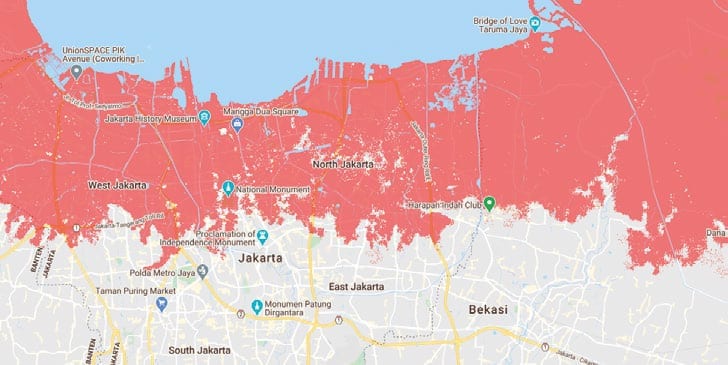
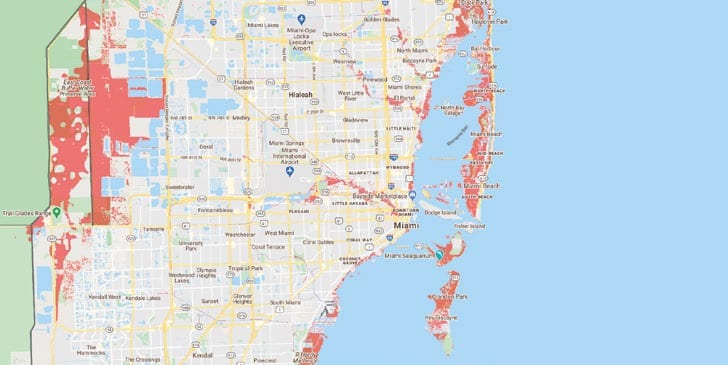
Jakarta is a victim of geography. It is hemmed in by the Java sea to the north, built on swampy land and is crisscrossed with over a dozen rivers, many of them intensely polluted. Despite an abundance of water, local authorities can only meet about 40 percent of the city´s demand. Local authorities´ inability to enforce regulations preventing groundwater extraction means that illegal tapping is out of control. The northern neighborhoods, home to one of Southeast Asia’s busiest seaports, are sinking fastest. Yet despite routine flooding, luxury apartments are filling-in the coastal skyline. The building bonanza will soon go bust: 95 percent of the city is expected to be underwater by 2050. Local authorities have taken notice and are building a $40 billion sea wall with Dutch and South Korean support. The city has already relocated more than 400,000 people from threatened riverbanks and reservoirs. But the truth is that the city is unable to face-up to the factors that are causing the city to sink beneath the waves.
Asian urbanites face rough seas ahead. Part of the reason for this is that there are simply more of them: about four out of every five people impacted by sea-level rise by 2050 will live in Asia. So-called “delta cities” will be the first to be submerged. Today, hundreds of millions of people live in roughly 50 delta cities such as Dhaka, Guangzhou, Ho Chi Minh, Hong Kong, Manila and Tokyo. These cities were once ideal places to settle because of their access to the sea and fertile farmland. These characteristics help explain why the Brahmaputra, Ganges, Indus, Nile and Yangtze served as cradles of many of the world´s great civilizations. But these ancient virtues are modern liabilities. Coastal living is becoming dangerous: the costs of sea-level rise will rise to the tens of trillions of dollars by 2100. Not surprisingly, insurers are pondering a world of ex-cities. They are already pricing in a “new normal” of higher frequency and more extreme events. We can expect to see rising seas factored into rising insurance premiums.
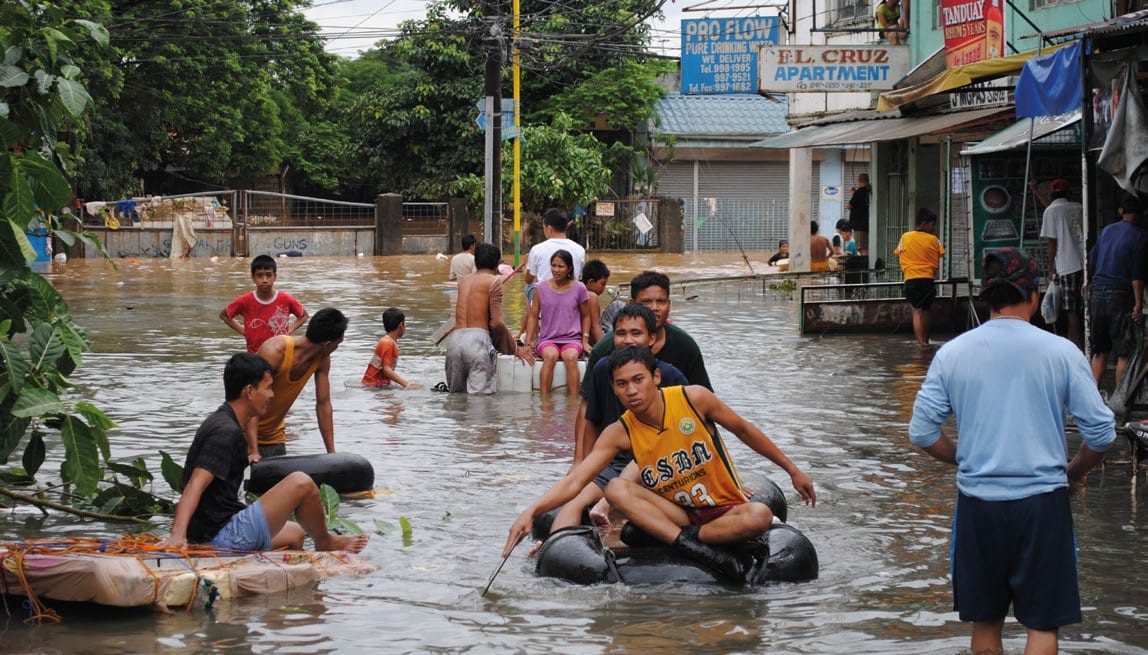
Cities across the Americas, especially those on the North American eastern seaboard and Gulf coasts, are on the front line of sea-level rise. Their vulnerability is due in large part to melting ice in Greenland and the weakening of Atlantic Ocean currents. In the U.S., over 90 coastal cities are experiencing chronic flooding – a number that will likely double by 2030. New York is one the most at-risk due to its location, but also its population size. Over the coming decades, 22 of the 25 more threatened cities will be in Florida. Faced with between three and 9 meters (10-30 feet) of sea-level rise by the end of the century, Miami is the poster child for cities on the edge. This partly explains why so many people are closely watching how Miami´s metropolitan authorities handle the situation. They have their work cut out for them. For one, Miami was never planned with sea-level rise in mind, which means its real estate and road infrastructure are highly exposed. Making matters worse, southern Florida’s underlying geology is like Swiss cheese – made-up of compressed reef – and is predisposed to heavy flooding regardless of whatever local officials decide to do. As if that were not enough, hurricanes and extreme weather events are growing in frequency and ferocity, which means more rainfall and storm surges.
Our floating future
Whether they like it or not, Miamians face a floating future. City officials are busily installing engineering fixes like sea walls, water treatment plants, and pumps to force water back into the bay. They are also investing in climate resilience by revamping building codes, raising roads, restoring wetland areas and issuing municipal green bonds to fund mitigation efforts. As in Jakarta, some neighborhoods are being surrendered to rising seas. A rash of properties are being converted into parks and water retention areas to absorb overflow. Governments, businesses and civic groups everywhere have good reason to plot cities with the future in mind. Roughly three-quarters of all European cities will be hit badly by rising seas, with Dutch, Spanish and Italian cities especially exposed. Rapidly urbanized and crowded African and Asian cities are also in trouble, especially the poorest segments of the population that are often densely crowded into informal and low-income housing at the water’s edge.
The fight back-has begun
Faced with prospects of extinction, a growing number of cities are making themselves climate-proof. Some of the most forward-looking cities are actively mitigating greenhouse gas emissions and designing-in adaptation at precisely the moment when nation-states are moving in the opposite direction. A prime example of this occurred immediately after the U.S. announced its withdrawal from the 2015 Paris Climate Agreement. Within days, over 1,000 cities signed a Mayor’s Climate Protection Agreement to meet – and exceed –global targets. Even cities like Austin, Dallas and Fort Worth in the oil-state Texas expect to be carbon neutral in the next few years. Already far-ahead of their U.S. counterparts, European cities are also actively adopting mitigation and adaptation strategies, for example Copenhagen, in Denmark, which expects to be carbon neutral by 2025. Powerful global city coalitions like the C40 and Carbon Neutral Cities Alliance are helping cities kick their addiction to fossil fuels before 2050. A Global Covenant of Mayors for Climate and Energy has already rallied at least 10,000 cities – more than 806 million people – to the cause.
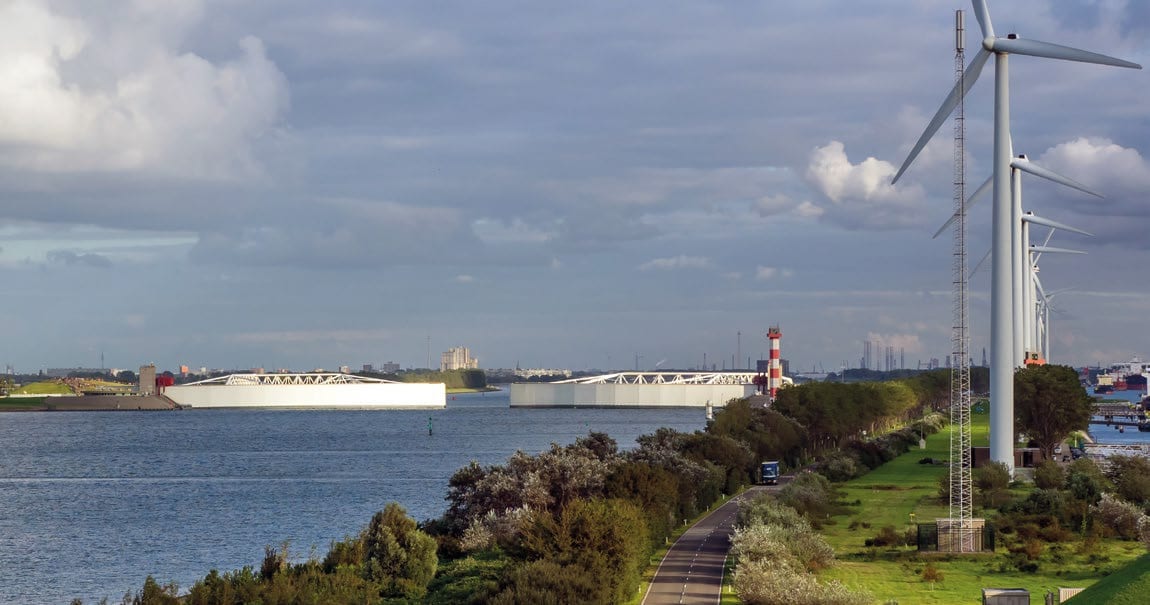
At the vanguard are Dutch coastal cities that are rolling-out an array of solutions to manage sea level rises. They have good reason to be proactive since over a quarter of the country is already below sea level. To accelerate municipal efforts, the national government has decentralized many aspects of water management, delegating cities to take charge. For example, flood protection is the responsibility of regional water management boards and not the central authorities. This is not to suggest that the national government is passing the buck: to the contrary, they have funded hard defenses such as a 3,700-kilometer network of dikes, dams and seawalls, as well as the massive Maesland Barrier. Built to protect Rotterdam (which is 90 percent below sea level) from water surges and floods, the barrier is the size of two Eiffel Towers flat on their sides.
Changing our attitude is the key
Cities like Rotterdam offer an inspiring model for how to manage sea-level rise. Rotterdam is one of the safest delta cities in the world precisely because it has learned to live with water. This attitude isn’t new. It can be traced back as far as the thirteenth century when local merchants and city administrators erected a 400-meter long dike to keep high waters from seeping in, but also to facilitate drainage. New canals were built in the 1850s to improve water quality and reduce routine outbreaks of cholera. The Maesland Barrier was constructed in 1997, several decades after catastrophic floods killed over 1,800 people in the early 1950s. As the maps show, today these titanic gates protect the city´s 1.5 million people from floods with no impediments to sea traffic.
But the critical ingredient of Rotterdam´s success isn´t engineering – it is attitude. The city´s current mayor, Ahmed Aboutaleb, claims that local residents “do not view climate change as a threat, but rather as an opportunity to make the city more resilient, more attractive and economically stronger.” In his view, climate adaptation is a window of opportunity to upgrade infrastructure, increase biodiversity, and more meaningfully engage citizens in city life. A few years ago, the city adopted a Climate Change Adaptation Strategy to climate-proof the city by 2025. Since then it has started converting ponds, garages, parks and plazas into part-time reservoirs. Local authorities are also working with community groups to revitalize neighborhoods, reduce inequality and build resilience to future shocks.
Sponge cities
Chinese cities are also taking action to mitigate and adapt to sea-level rise. As in the case of the Netherlands, the Chinese were motivated in part by disaster. In 1998, floods killed roughly 4,000 people when the Yangtze River basin overflowed. A growing number of big cities such as Beijing – which more than doubled its total land coverage in the last decade – are also suffering a rise in floods. Today, roughly 641 of China’s 654 largest cities are affected by regular flooding, especially those on the coast. The Chinese government has responded with a combination of hard engineering, environmental and people-based strategies, together with the relocation of millions of citizens.
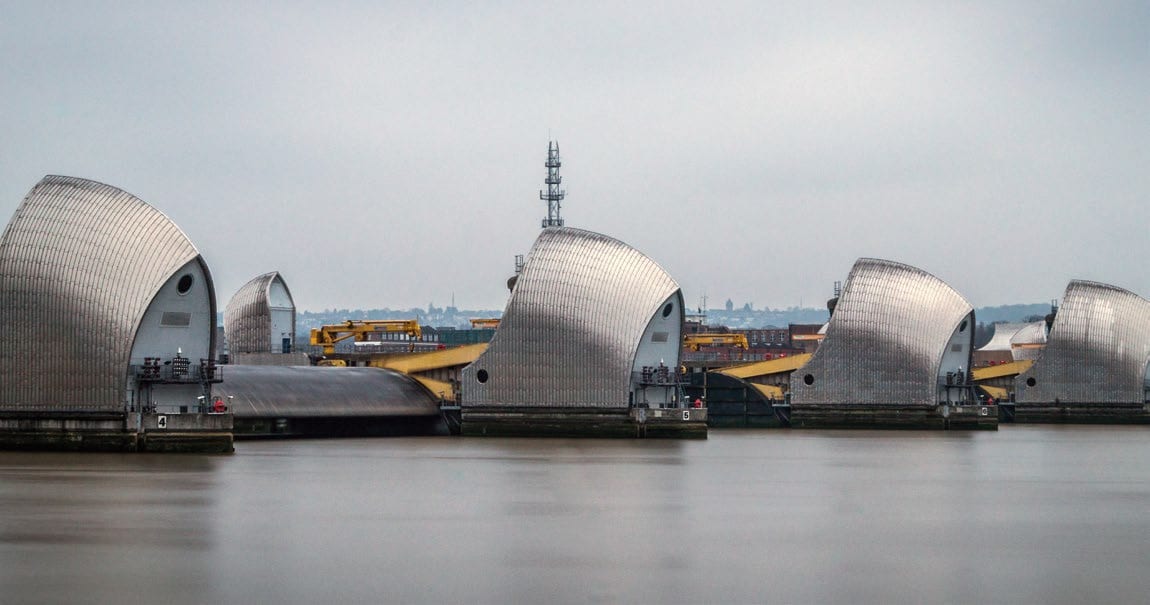
Photo: Phil Dolby.
In 2014, China launched the so-called sponge city initiative. The term actually originated in Hyderabad when the city authorities started collecting storm-water to offset water demand during planting season. Likewise, Vinh in Vietnam also adopted a ‘city as sponge’ strategy to lessen the impacts of seasonal floods on vulnerable urban areas. In the case of China, the sponge strategy requires that 80% of all urban land is able to absorb or reuse 70% of storm-water. More than 30 cities are currently part of the initiative including Shanghai – one of the most flood-prone cities in the world. The Chinese expect that at least another 600 cities will join in the coming decade.
Shanghai’s authorities are putting enormous stock in adaptation strategies. And not without good reason – by 2050, the city is expected to experience flooding and rainfall that is 20% higher than the global average. The city is already rocked by two to three typhoons every year. Shanghai is also sinking, albeit less slowly than Jakarta. To reduce its exposure to rising seas, Shanghai has constructed 520 km of protective seawalls that stretch across the Hangzhou Bay and encircle the islands of Chongming, Hengsha and Changxing. As in the case of Rotterdam, Shanghai has also installed massive mechanical gates to regulate overflowing rivers.
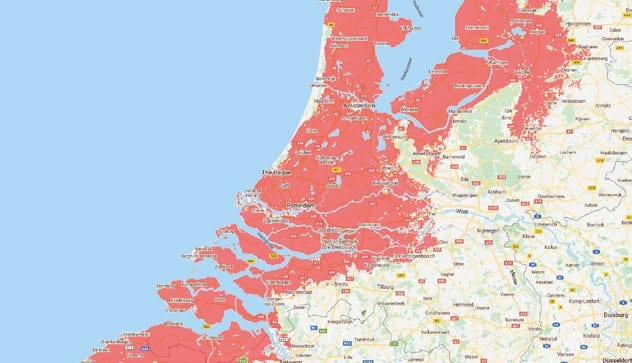
Image: Climate Central.
For their part, US cities are busily investing billions of dollars to bolster their resistance to rising sea levels. New Orleans established the Hurricane and Storm Damage Risk Reduction System shortly after Hurricane Katrina killed more than 1,600 people in 2005, leaving 80% of the city underwater. The system includes a series of massive dam barriers, reinforced levees and flood-walls stretching some 560km around the city. The city also built a living water system of parks, wetlands and other existing features to reduce reliance on pumping and canals. It is one of the largest public works projects in US history and the most expensive flood-control system in the world. Boston, Houston, Miami, New York City and dozens of other places are following suit, albeit on different scales.
Entire nations under threat
The people who are most nervous about sea-level rise are already living at, or below, sea level. Few places are more at risk than small island nations like Kiribati, the Marshall Islands, the Solomon Islands, Tuvalu or the Maldives. Climate change will literally wipe these countries from the face of the earth. Besieged by rising waters, Kiribati is negotiating to buy 5,000 acres (20 square kilometers) of land in neighboring Fiji on which to move its 113,000 citizens when necessary. A government website concedes that national survival is unlikely, making it the first nation-state likely to cease to exist as a result of climate change. Residents of the Marshall Islands face a similarly stark choice: leave the country or climb higher. Public authorities there are desperately looking for ways to reclaim land and build islands that are high enough to withstand rising seas. The Maldives is also attempting to reclaim, fortify and build new islands, and relocate when necessary. These countries are not rare exceptional birds: they are the canaries in the mine.
From Asia and Africa to Europe and the Americas, sea-level rise is inevitable. Mitigation efforts must be scaled up. However, precisely because it already poses an existential threat to coastal communities everywhere, adaption is essential. At a minimum, governments, businesses and citizens need to avoid making a bad situation worse. Adjusting zoning laws and reducing building in at-risk coastal areas and flood plains is a start. Proactively developing strategies to relocate populations who are vulnerable to sea-level rise is no less important. Innovative financing models and multi-stakeholder partnerships are also critical. But perhaps most importantly we need a new mindset. The fates of millions depend on it.